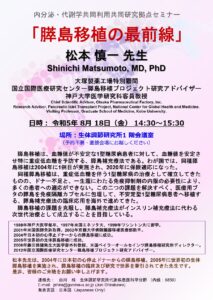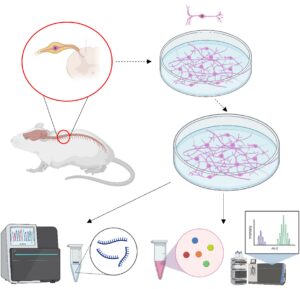Imegliminとmetforminの早期併用療法による膵β細胞保護の保護に関する論文がendocrinologyのcommentaryで紹介されました
Early Combination Therapies for the Preservation of Pancreatic β Cells in Type 2 Diabetes Mellitus. Endocrinology. 2023 Aug 28;164(10):bqad134. ![]()
Type 2 diabetes mellitus (T2DM) is a progressive multifactorial metabolic disorder affecting several organ systems and represents more than 90% of all diabetes cases. Patients with T2DM are at high risk of developing secondary complications, such as neuropathy, retinopathy, and cardiovascular disease. T2DM is characterized by persistent hyperglycemia because of insufficient insulin action (insulin resistance) and inadequate insulin secretion from impaired compensatory mechanisms by pancreatic β cells. Here, we discuss work by Nishiyama and colleagues on the benefits of combination therapy with imeglimin and metformin (Imeg + Met) on pancreatic β-cell function and mass.
Traditionally, treatment guidelines have focused on maintaining normoglycemia by improving insulin secretion or decreasing peripheral insulin resistance in newly diagnosed patients. Metformin or sulfonylurea monotherapies with lifestyle changes have been the first line of care. However, because of the progressive nature of the disease, patients with T2DM on monotherapy are often unable to achieve glycemic control and are exposed to prolonged periods of hyperglycemia. Early initiation of combination therapy with agents that have complementary mechanisms of action (ie, insulin sensitizers and insulin secretagogues) has been proposed for yielding consistent and durable glycemic control. The Vildagliptin Efficacy in Combination With Metformin for Early Treatment of T2DM study generated evidence to support the efficacy of early combination therapy with metformin and vildagliptin, a dipeptidyl peptidase-4 inhibitor. Metformin reduces hepatic glucose production (inhibiting gluconeogenesis) and increases tissue glucose uptake, whereas dipeptidyl peptidase-4 inhibitor inhibits the enzyme dipeptidyl peptidase-4 activity and prevents the inactivation of glucagon-like peptide-1, a glucose- and nutrient-dependent insulin secretagogue with glucose-lowering effects. Both drugs have a low risk of inducing hypoglycemia and therefore provide an interesting combination for treating T2DM.


